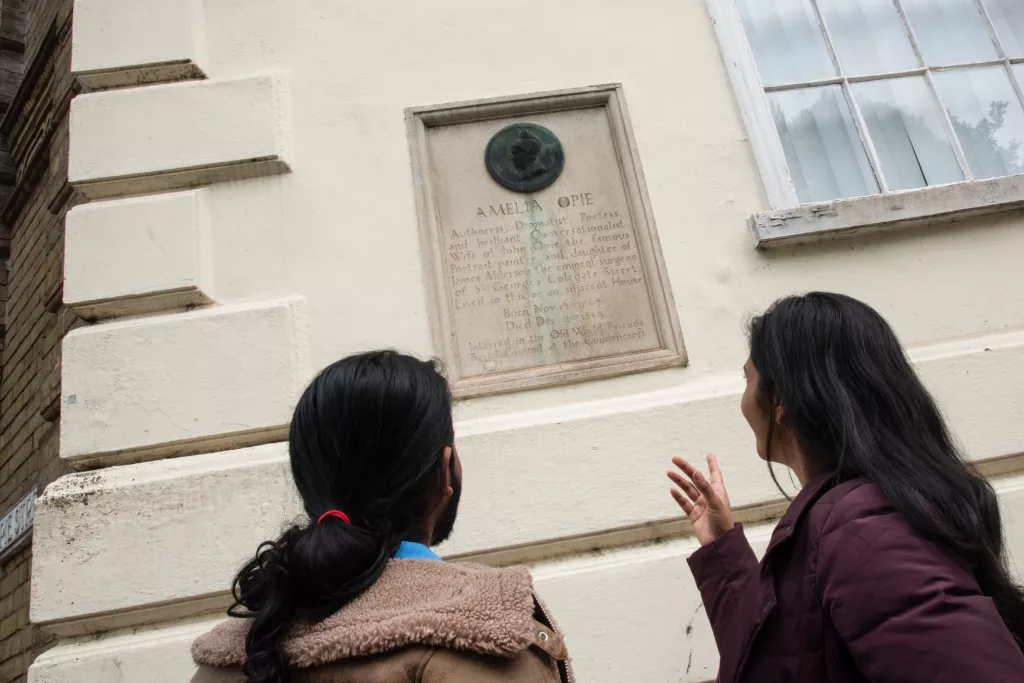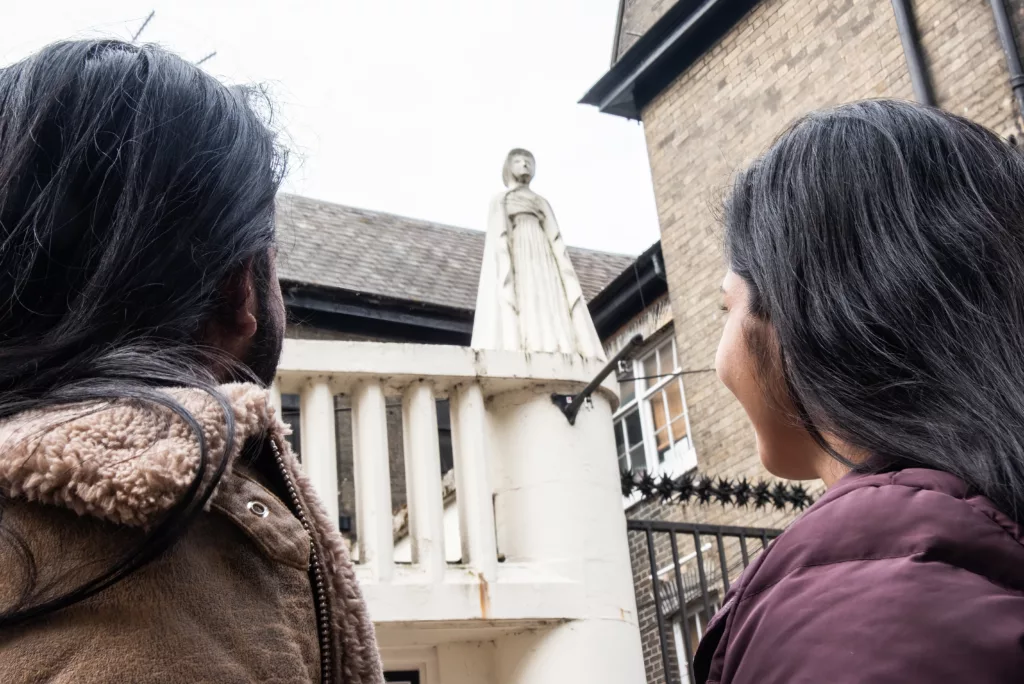Just off Castle Meadow on 22 Opie Street in Norwich there is a plaque celebrating Amelia Opie. You can see her statue above street level, a vivacious, free-thinking woman who published novels, wrote poetry, and fought the horrors of the slave trade.
Amelia was born in 1769, only daughter of James Alderson, a physician with links to the Norwich reform movement. Living in London she associated with radical political circles alongside Mary Wollstonecraft and William Godwin whose daughter, Mary Shelley, wrote ‘Frankenstein’.
In 1798 she married artist John Opie who encouraged her novel and poetry writing. Her most famous book is ‘Adeline Mowbray’ (1804) the story of an unconventional woman clashing with society’s expectations. Many of the heroine’s experiences are based on those of Mary Wollstonecraft.
After John’s death in 1807 Amelia returned to Norwich, renewing her friendship with the Gurneys, a prominent Quaker family. She dedicated the rest of her life to philanthropic projects, visiting workhouses, hospitals and prisons and promoting a refuge for reformed prostitutes. She worked with Anna Gurney to establish the Norwich Ladies’ Anti-Slavery Society and was one of the few women to attend 1840’s World’s Anti-Slavery Convention. Earnest and driven, by all accounts she was also a merry soul who in old age raced a friend in her wheelchair at the 1851 Great Exhibition.
She died in 1853 and is buried in Gildencroft Quaker Cemetery in Chatham Street, one of the ‘profane and opinionated’ Quaker women remembered by Rosie’s Plaques.

